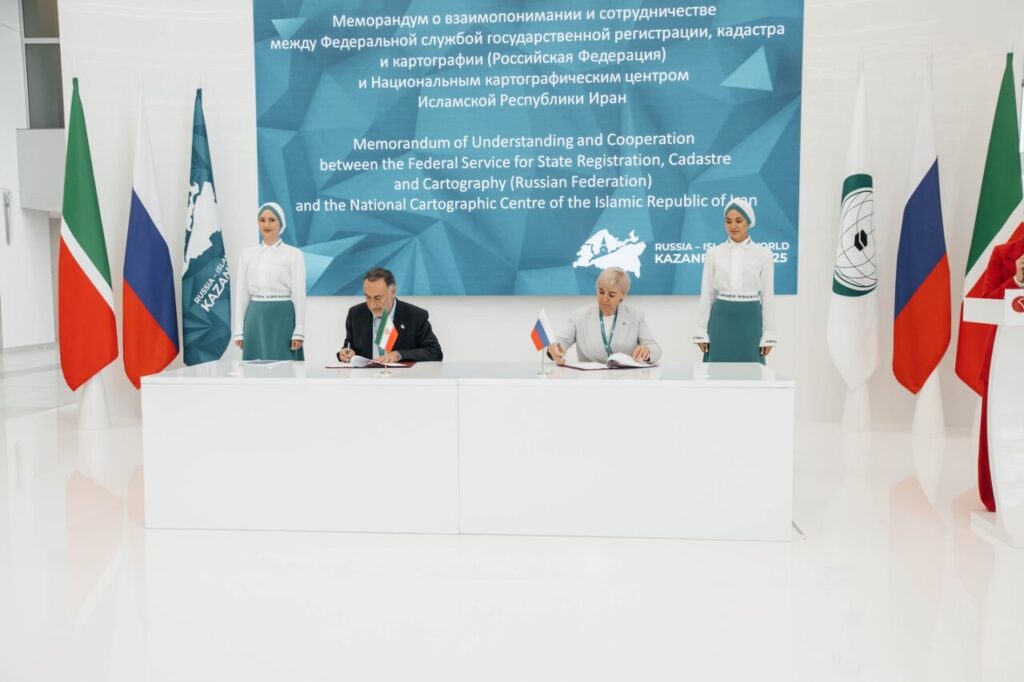Tehran – Russian Federation Services for Iran’s National Mapping Centre and State Registration, Underground and Mapping have signed a Memorandum of Understanding (MOU) to develop Spatial Data Infrastructure (SDI).
Mu was signed on the sidelines of the 16th International Economic Forum, Russia-Islamic World: Kazan Forum, Isna reported.
The aim is to enhance cooperation between the two organizations through sharing mapping technologies, developing spatial data infrastructure, and implementing joint geography projects.
Proposals for establishing joint SDI
The proposal presented in September by the Director of the Iranian National Mapping Centre (NCC) to establish the BRICS Spatial Data Infrastructure (SDI) was received by all participants at the third conference of the BRICS Working Group on Geospatial Technologies and its Applications.
The Moscow-sponsored conference took place from September 16th and 17th.
The third working group meeting aims to organize appropriate platforms to develop geospatial technology, promote collaboration and provide new and important opportunities to discuss some important issues.
Addressing the opening ceremony of the conference, Ali Javidaneh said that maps and spatial data are key tools in the sustainable development of communities and provide information necessary for informed decision-making, effective planning and economic growth.
Officials also presented several proposals. Among them, BRICS SDI attracted the attention of participants.
Furthermore, on the second day of the meeting, the memorandum previously signed by the Working Group on Spatial Data Infrastructure was finalized with the active participation of Iranian representatives.
Geospatial technology is a term used to describe the scope of modern tools that contribute to geographical mapping and analysis of Earth and human society.
They play an important role in today’s interconnected world, providing valuable support to individuals, governments, and various sectors of the economy.
The combination of spatial technology with artificial intelligence, deep learning, and big data analytics has positive outcomes for communication, navigation, transportation, cadus, cartography, and other applications.
Examples of geospatial technologies include remote sensing, geographical information systems (GIS), and geographical positioning systems (GPS). Geospatial technology can be used for all types of activities, including military use, environmental use, and everyday use.
mt/mg

